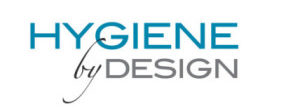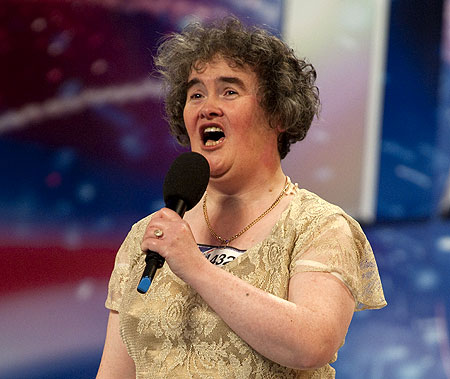I have the privilege of bringing Patti DiGangi to you. Patti is a hygienist of over 30 years, filled with vision and passion for our industry more than ever. She empowers hygienists all over the country with her courses and inspires me to be the best hygienist I can be for my patients. I refer to Patti as the Queen of Coding. I am always learning something new from Patti. And, I especially love her little book, DentalCodeology, More than Pocket Change. She has made periodontal coding so simple to understand and easy to follow in this handy book. I keep mine in my treatment room for my own reference and it’s a requirement for every hygienist I coach to have one of their own.
I had an opportunity to sit down with Patti and fire off the most recurring questions I get from hygienists. Patti was gracious to allow me to share our conversation in hopes that it will bring some clarity for you and your hygiene team when it comes to decoding CDT codes.
Chris
In your book (p23) you make the statement, ‘…particularly registered dental hygienists, need to get involved on the coding decision-making process.’ I agree with the statement. However, over the years, I’ve had many hygienists insist that understanding codes for procedures is ‘not my job’. How do you respond to this idea that many hygienists don’t want to be involved in the process and even argue that they don’t want to learn about codes because they claim it will have a negative impact on their recommendations.
Patti
To be honest, I think that is an excuse. We all work for a lot of reasons, not the least is money. Hygienists sometimes play the game with their own brain that if they are on commission that they will recommend treatment that is not needed. That is a values decision and they must not think too highly of their own ethics. They work for money but it is time to be smart about it. In addition, insurance fraud is probably, though often unintentionally, being committed in their license both by the office and the RDH themselves. Our own documentation shows it. For example, the evaluation codes (there are no exam codes) call for, in the description, diagnosis and treatment plan. That isn’t limited to any particular care. So the RDH sees that patient and D0120 Periodic Evaluation is charged. That means that no matter the treatment, there needs to be a written diagnosis. Even for a prophy? Absolutely! I cover this start (p24-32) in the book.
Chris
And, for those who do agree and want to learn and grow in this area, how can hygienists get more involved in this process?
Patti
Of course, I am going to say by buying my book but, as importantly, putting the information into their daily practice. For much of it, they don’t have do or say anything to anyone else. For much of it, it is what our educational process taught us but we don’t do regularly in practice. Now why don’t we do it?? No good answer. I also discuss the ADHA Standards for Clinical Dental Hygiene Practice (p31) and Standard of Care on (p4). If there was litigation, lawyers and judges sure would see those as important. So even if they don’t want to be involved, they are.
Chris
Great point! The most common challenge I address with many hygienists is when it comes to more comprehensive therapy in treating disease. I frequently get questions on how and when to use the D4342 (SRP – one to three teeth per quad) and D4341 (SRP – four or more teeth per quad) codes. And, how both codes can be used with one patient. Also, I often get questions about how a D1110 (adult prophy) comes into play when one area is treated and coded as D4342. Can you establish some clarity on how to code for these situations?
Patti
I cover all of that in the book. The simple answer to all of it is what was the diagnosis? Coding is based on diagnosis not just treatment. And the silly RDH can’t diagnose is a joke. Why? We do it daily over and over. I discuss the Dental Hygiene Diagnosis on p. 6 of the book.
Chris
YES! I think this is the big missing for most practices — ensuring there is FIRST a documented diagnosis. Okay, and the next common area that is confusing for many dental teams is the appropriate way to code treatment for a patient that is in maintenance following one quad coded as D4342 and D1110. Can this be coded for both a periodontal maintenance (D4910) and an adult prophy (D1110) and what is the proper documentation required?
Patti
What is the patient diagnosis? What is the patient’s risk assessment? What are the person’s general health conditions and medications? To say what coding is without this other information is incorrect. I use cases in the book to answer all of this and more. There is a little box 35. Remarks on a claim form and what should be in that box is the medical-dental necessity for the care rendered. I am currently co-writing my next book DentalCodeology: 5.5 Fundamental Steps to Diagnostic Coding that will be out right after Thanksgiving. As of July 25, 2013, the state of Minnesota decided all dental professionals in their state must use certified interoperable electronic health records starting 2015 — just over 1 year away. It is just a matter of time before it becomes a requirement to all the states. For records to be interoperable, there is a 2nd set of diagnostic codes that will be used. Those codes CANNOT be decided by the business staff. Hygienists and dentists will have no choice but to be involved. That is the whole purpose of my series of books.
Chris
I think we’re getting the picture…collect the data necessary to DIAGNOSE before jumping into treatment. It’s not about treating the patient based on the previous visit or what the schedule reads. It’s based on how the patient presents in that moment in the chair and the diagnosis.
So, here’s a good one for you…many hygienists are still trapped in the gross scale / fine scale dilemma, particularly with patients who are just a “little overdue” and “need more time”. In an effort to maximize productivity for the day, often the radiographs are taken and the doctor is performing the comprehensive eval and diagnosis and the hygienist is expected to “produce” — all on the same day. This gross scale / fine scale becomes the default for many hygienists in this case. Can you speak to this issue and the concerns about it in more detail?
Patti
I have spoken to all this in the book. Gross Scale/Fine Scale needs to RIP-REST in Peace, they are dead. It is based on periodontal theory from the 1950-60’s! Calculus is NOT the reason for disease. Glossy smooth roots and particularly the term scaling and root planing language needs to go away, again based on 50-60’s perio philosophy. Dr. Robert Compton, former head of Delta Dental, now head of Dental Quest, said the problem with the codes is much is based on 50-60’s thinking-this is exactly what he is talking about. What is so very sad about this is the least way an RDH is productive is doing prophies! Why is that sad? Because hygienists allow others to decide their professionalism. Our education teaches us more yet, how far have we really come in 100 years? For many, they are still ‘the girls trained to clean teeth with tools’ — every single word in that phrase is disempowering. I still practice clinically but not in an ideal environment. Why? Because there is no such thing, it is like an ideal spouse-some in our imagination. I have to decide each day I practice and with every patient what is the most appropriate care. My schedule says I am supposed to do this or that but I ignore it. The patient puts their trust and life in my hands, I have duty to offer the absolute best.
Patti and I would love to hear from you. What is your biggest take-away and what are the challenges you face in practice when it comes to coding?

Learn more about Patti and how to get your very own, DentalCodeology, the mini-book:
www.Pdigangi.com or www.Dentalcodeology.com
Connect with Patti on facebook: www.facebook.com/dentalcodeology
Or private message Patti at: info@DentalCodeology.com
Click below to take advantage of these sweet offers from Patti and SAVE:
Book & eBook: http://bit.ly/13fcGFP
eBook only: http://bit.ly/1dQzeDv
Discount for 2: http://bit.ly/1dHMnhi
Buy 3, get 1 FREE: http://bit.ly/15ZD87h
You’ll also get CDT 2014 eBook update absolutely FREE!!!
If you enjoyed this article please like, share and comment below. For support in any of these areas and more reach out by calling or private message to connect with me at 866.809.4890 or Chris@hygienebydesign.com. And, be sure to check us out on facebook and follow us for the latest strategies and tips for growing a hygiene department and practice you love…by design!
Many thanks and gratitude to you, Patti. I am in awe of your continued passion and enthusiasm for our profession. I am honored to be a colleague and friend.




